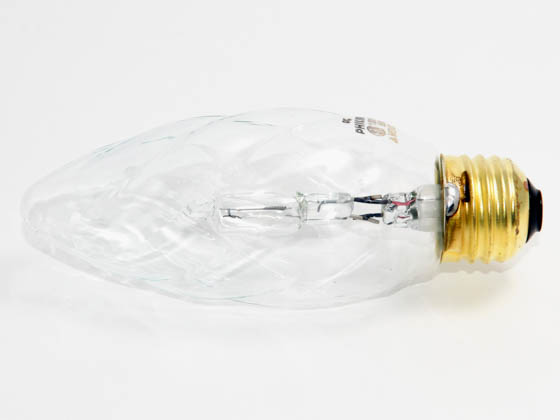
If you still have the original packaging the neon tube came in you can put the dead tube in there. When replacing or removing the dead bulb be careful when removing the neon light from the light fixture to prevent breakage. The gas within this bulb is not dangerous but neon tubes do contain harmful mercury vapor, similarly to CFL bulbs and fluorescent tubes, so be sure to dispose of a neon tube similarly to the CFL and fluorescent tube recycling process. The neon red in many neon tubes is made possible by a neon gas, and other colors of neon bulbs are made possible by krypton, argon and helium gas. Neon tubes are commonly used as signs and light decorations. Neon tubes are always cool to look at, especially with the variety of colors they come in.
#HALOGEN BULB DISPOSAL HOW TO#
To learn more on how to dispose of fluorescent tubes and specifics on your area, head to the Texas Commission on Environmental Quality website. These bulbs contain mercury, which is why it is important to dispose of them separately from normal garbage. Unfortunately, if the bulb breaks at any point in the process, there is no way to recycle the broken pieces. Once the tube is removed, be sure to wrap the bulb in newspaper or bubble wrap to prevent it from breaking while transporting to a recycling center.

It is important to be careful when handling the tube to prevent breakage. When a fluorescent tube dies and you are replacing it, be sure to turn off the fuse box to ensure safety. Unlike CFL bulbs, fluorescent tubes are a little more difficult to dispose of. Fluorescent tubes are one of the most energy efficient bulb options out there, but require specific disposal instructions. Instead of recycling, toss these bulbs straight into the trash.įluorescent tubes are common sources of light in larger areas and are typically used in offices, closets and garages. Because the wires are so small, they are nearly impossible to separate out through the recycling process. However, it is important to note that halogen lamps cannot be recycled because they contain thin wires within the bulb that are made of non-recyclable materials. Halogen light bulbs can be disposed in any normal household waste bin. Halogen light bulbs are commonly used in outdoor settings such as flood lights, headlights on a car and spotlights. If there are not recycling options available through your recycling company, you can simply dispose of LED bulbs in your garbage when they die. Since LED bulbs can be recycled, you can contact your recycling company to see if they accept LED bulbs. LED bulbs don’t contain harmful substances like CFL bulbs do, so they can be disposed of in the garbage or recycled if that option is available to you. LED lights are becoming more popular compared to other common light bulbs because of their energy-efficiency, longevity and lack of maintenance compared to other common bulbs, such as incandescent bulbs. LED light bulbs have a longer lifespan than CFL, which is why they are a little more expensive than CFL. LED bulbs and CFL bulbs are two very common light bulbs used in homes, but there are differences in the two. To learn more about Texas’s rules and regulations, head to Texas Commision on Environmental Quality’s website. Some states have specific rules for disposing CFL bulbs, so be sure to check before tossing them in the garbage. Along with the environmental reasons for recycling compact fluorescent bulbs, there are many materials that can be reused, like the glass and metal that make up the bulb. If disposed of wrong, pieces of mercury in a CFL light bulb can end up in the environment. The United States Environmental Protection Agency encourages people to utilize available recycling resources for dead CFL light bulbs because this particular type of light bulb contains small amounts of mercury. Because there are tiny wires in this glass, it is very difficult to separate normal, recyclable glass from incandescent lamp glass.Ĭompact fluorescent lamps are common light bulbs used in many screw in lamp sockets. Unlike normal glass, this light bulb cannot be recycled because of the wires within the glass light bulb.

An incandescent lamp can be disposed of in normal household waste bins but cannot be recycled.

Incandescent bulbs are a standard home light bulb and are frequently used in microwaves, ovens and ceiling fans.

Proper disposal of dead light bulbs is an important step to ensuring harmful materials are not entering our environment and recyclable materials are able to be reused in the future.


 0 kommentar(er)
0 kommentar(er)
